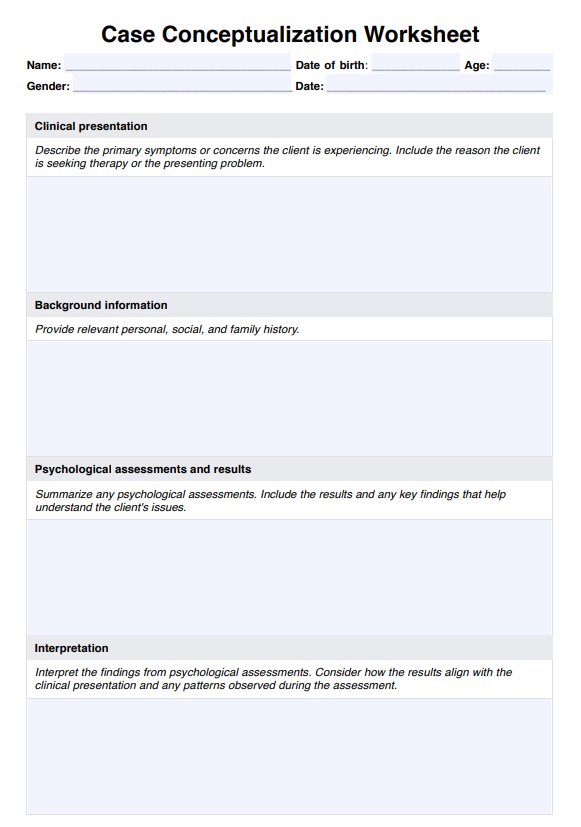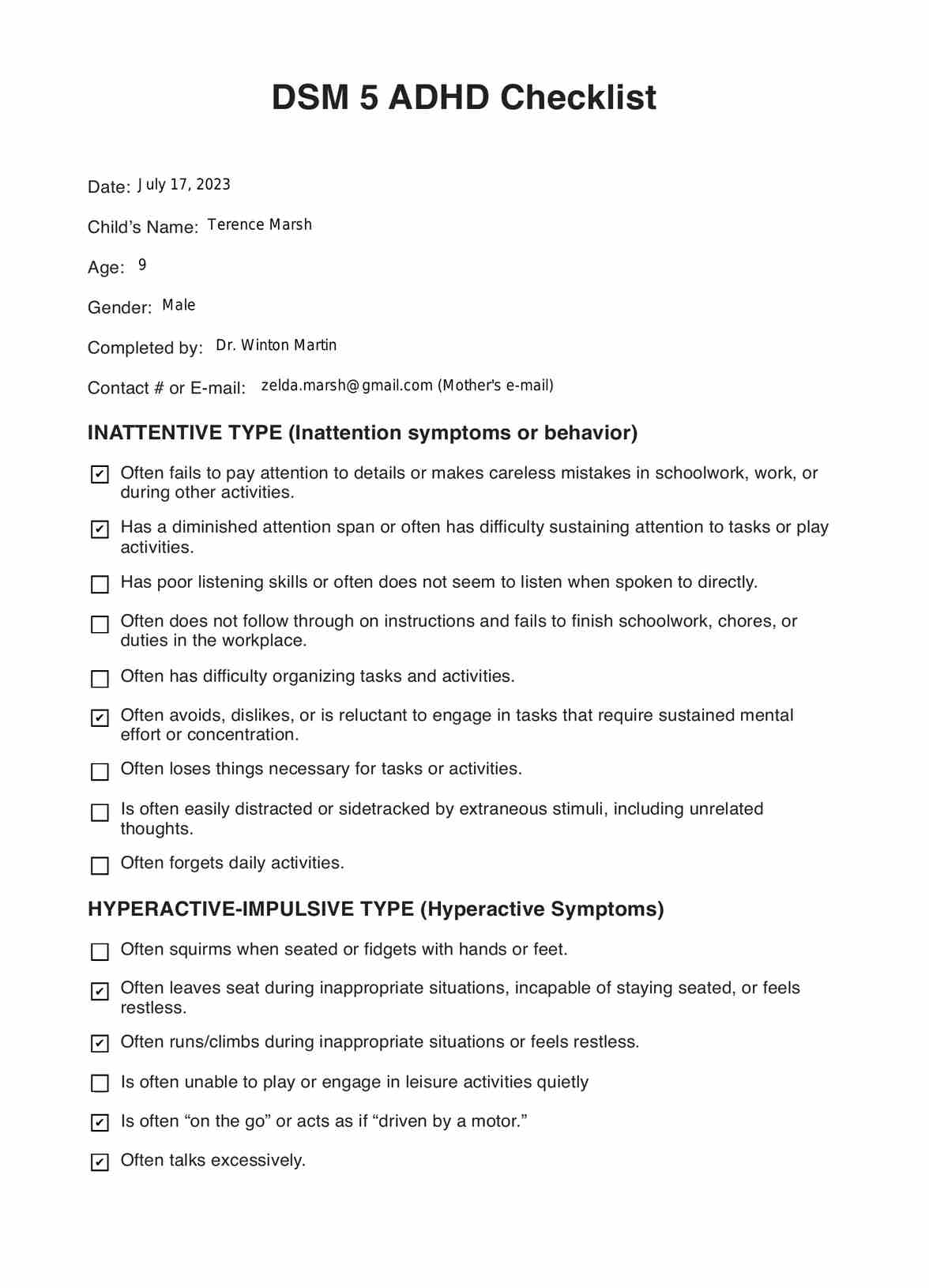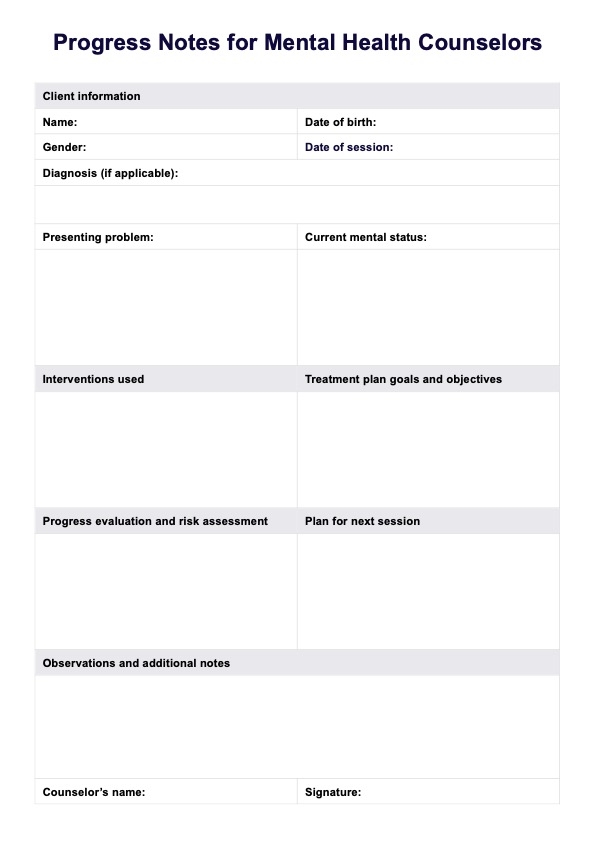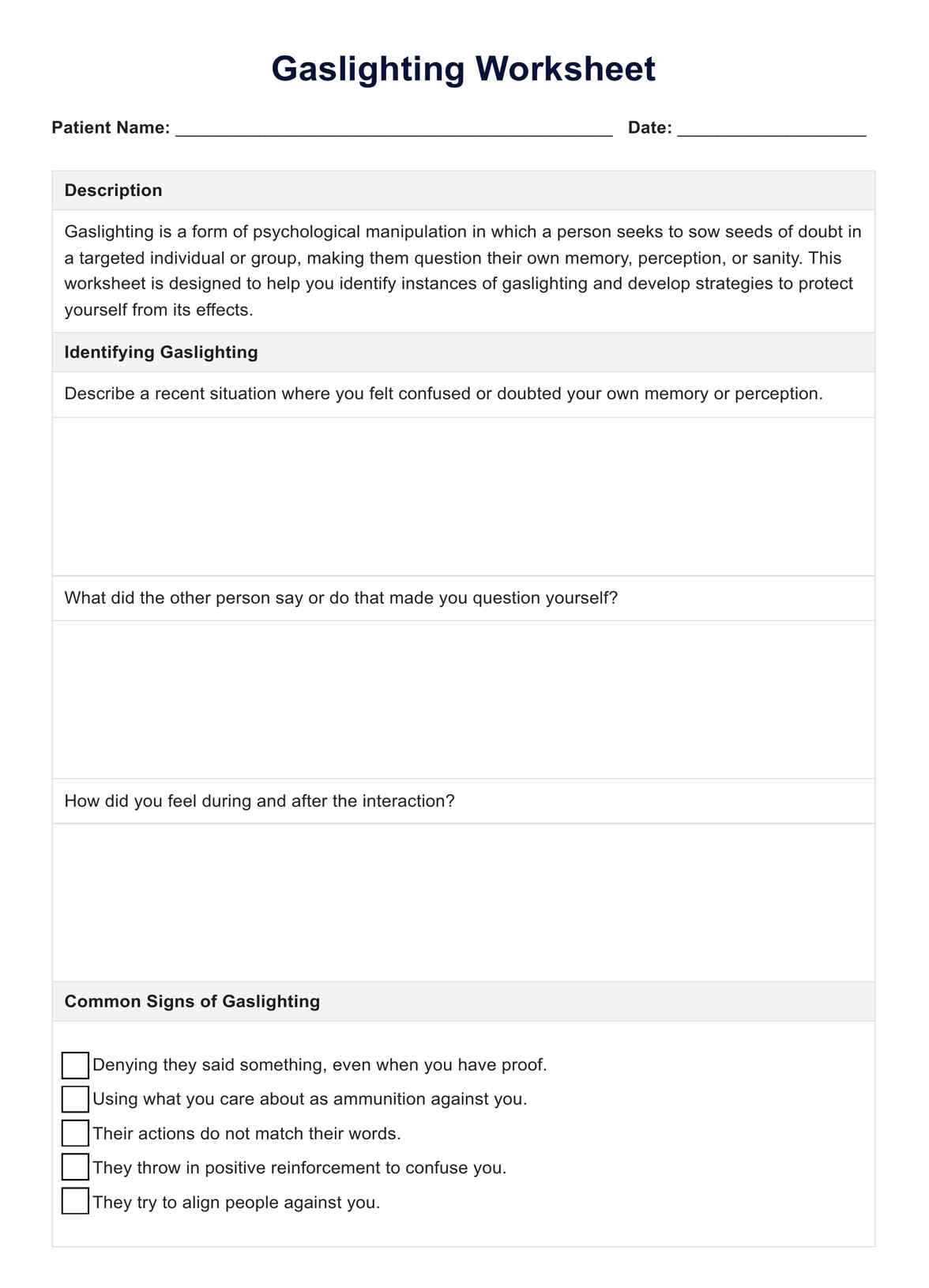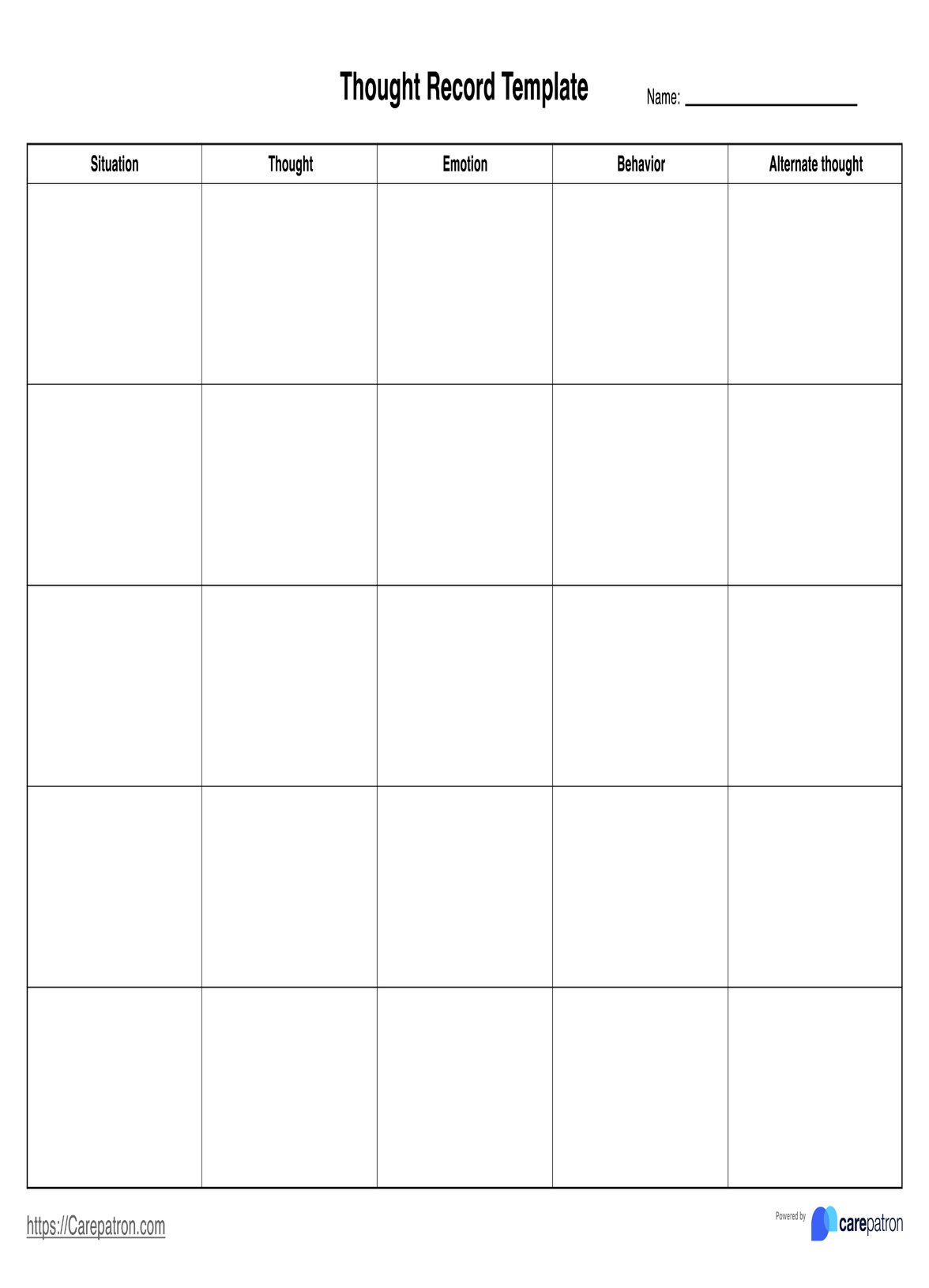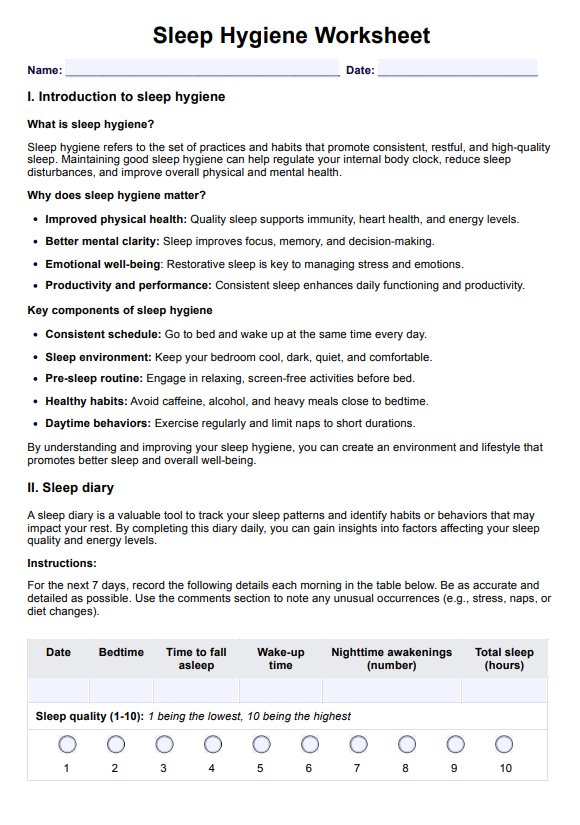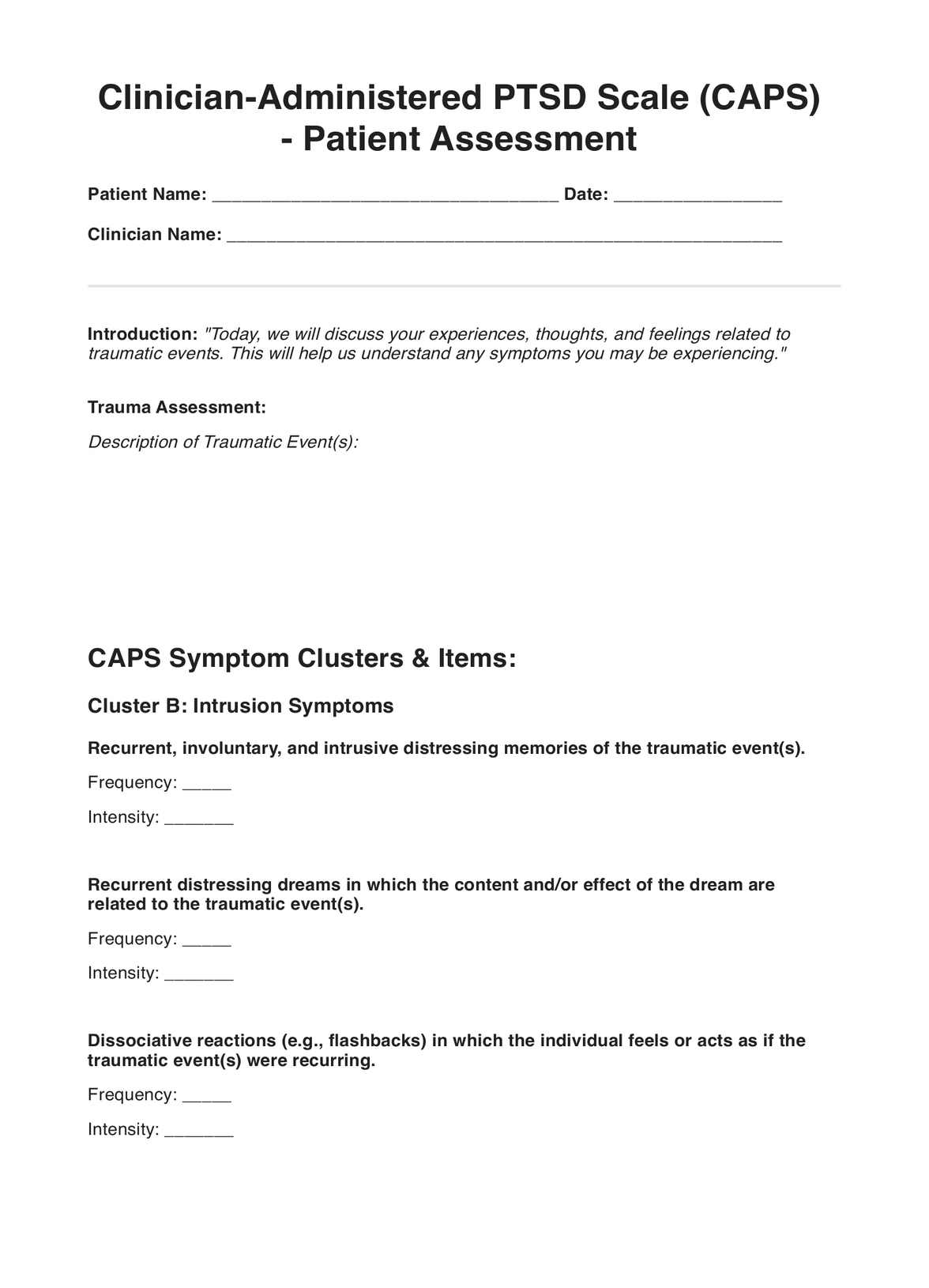Places from My Past PTSD Worksheet
Support your patients in addressing past trauma with the Places from My Past PTSD Worksheet. Download our free PDF example today!trauam


What is Trauma and PTSD?
Trauma is an overwhelming and distressing event that can profoundly affect a person's mental and emotional well-being. It encompasses a range of experiences, from natural disasters and accidents to physical or sexual assault and combat, often leaving individuals feeling helpless and fearful.
is a mental health condition that can develop after exposure to trauma. It is characterized by persistent symptoms that persist beyond the traumatic event. These symptoms include intrusive memories, flashbacks, nightmares, avoidance of trauma-related triggers, changes in mood and cognition, and heightened arousal responses.
Memory issues are closely intertwined with PTSD. Traumatic memories can be intrusive and vivid, causing individuals to relive the trauma repeatedly, leading to heightened anxiety and distress. Conversely, PTSD can also lead to memory impairments, such as difficulty recalling specific details of the traumatic event or creating new memories after the trauma (anterograde amnesia).
The relationship between memory and PTSD is intricate. Traumatic memories can be deeply ingrained, resulting in flashbacks and emotional turmoil. However, memory challenges can extend beyond the traumatic event itself, impacting the recollection of other life experiences and contributing to disconnection from one's past. Addressing memory issues is vital for individuals seeking to manage and recover from PTSD, as these challenges significantly affect daily functioning and overall well-being.
Places from My Past PTSD Worksheet Template
Places from My Past PTSD Worksheet Example
How to use the Places from My Past PTSD Worksheet:
As healthcare practitioners, your guidance in utilizing this worksheet can significantly aid your patients in their healing journey. Here's a step-by-step guide on how to effectively use this worksheet with your patients:
Step 1: Obtain the Worksheet
Ensure your patient can access the Places from My Past PTSD Worksheet. They can download it from a trusted source or obtain a physical copy.
Step 2: Identify a Triggering Place
Encourage your patient to select a specific place from their past that triggers their PTSD symptoms. This place should be connected to a traumatic event or experience.
Step 3: Describe the Place in Detail
In the worksheet, instruct your patient to describe the triggering place in as much detail as possible. This description should encompass visual aspects, sensory elements (sounds, smells, textures), and any memories or events associated with the location.
Step 4: Explore Emotional Reactions
Guide your patient to reflect on the surface emotions when they think of or visit this place. Encourage them to note any physical sensations they experience. Help them identify specific triggers that intensify these emotions, providing a deeper understanding of their reactions.
Step 5: Develop Coping Strategies
Discuss with your patient the coping mechanisms they currently employ when confronted with triggers from this place. Explore relaxation techniques, grounding exercises, or any existing strategies they use to manage their reactions. Encourage the development of a personalized coping plan.
Step 6: Reclaim Power Over Reactions
Support your patient in brainstorming ways to regain control and empowerment when dealing with this triggering place. This may involve therapy, exposure therapy, or reframing their association with the location. Collaborate on a plan for implementing these strategies effectively.
When would you use this Places from My Past PTSD Worksheet?
Here are the best and most appropriate times to use the Places from My Past PTSD Worksheet:
Therapy and Counseling Sessions: Mental health professionals, such as therapists, psychologists, and counselors, can incorporate this worksheet into their sessions with clients who have PTSD. It provides a structured way to explore specific triggers and develop coping strategies collaboratively.
Self-Reflection and Personal Growth: Individuals with PTSD can use this worksheet as a self-help tool during heightened distress or as part of their ongoing healing journey. It allows for personal reflection and helps in identifying and managing triggers independently.
Support Groups: Support groups for individuals with PTSD can use this worksheet as a shared exercise to encourage group members to discuss their experiences, share coping strategies, and provide mutual support.
Preparation for Exposure Therapy: For those undergoing exposure therapy, the worksheet can be employed to prepare individuals for gradual exposure to their triggering places, helping them anticipate and manage emotional reactions.
Preventative Measures: This worksheet can also serve as a preventative tool. Healthcare professionals can introduce it to individuals who have experienced traumatic events but haven't yet developed full-blown PTSD symptoms, helping them process and manage potential triggers early.
Are you looking for a similar resource? Make sure to check out our PTSD Worksheet Template to help patients better manage their PTSD.
What are the benefits of using this Places from My Past PTSD Worksheet?
Using the free Places from My Past PTSD Worksheet offers several significant benefits for individuals dealing with post-traumatic stress disorder (PTSD):
Reduced Emotional Distress
By systematically examining their emotional reactions and triggers, individuals can gradually desensitize themselves to the distressing memories associated with specific places. This can lead to a reduction in the overall emotional distress and anxiety experienced when encountering these triggers.
Customized Coping Strategies
The worksheet allows individuals to tailor coping strategies to their unique needs and triggers. This personalization ensures that the coping mechanisms developed are most effective in managing their specific PTSD symptoms, promoting better mental health outcomes.
Track Progress Over Time
Regularly using the worksheet enables individuals to track their progress in managing PTSD triggers. They can observe how their emotional responses and coping strategies evolve, providing a tangible measure of their healing and recovery journey.
Commonly asked questions
The time it takes to complete the worksheet varies from person to person. Some may complete it in one sitting, while others may need multiple sessions to thoroughly reflect on their triggers and emotions associated with the place.
The worksheet can be helpful by providing a structured framework for individuals to explore and manage their PTSD triggers. It guides them through a self-reflective process, helping them gain insights into their emotional reactions and develop coping strategies.
It is best used when individuals are in a calm and focused state of mind, as it involves introspection and addressing potentially distressing memories. It can be employed during therapy sessions, as part of a self-help routine, or in support group settings.
It can be used by individuals who have experienced trauma and are dealing with post-traumatic stress disorder (PTSD). It can also be a valuable tool for mental health professionals, therapists, counselors, and support group leaders who work with individuals struggling with PTSD.


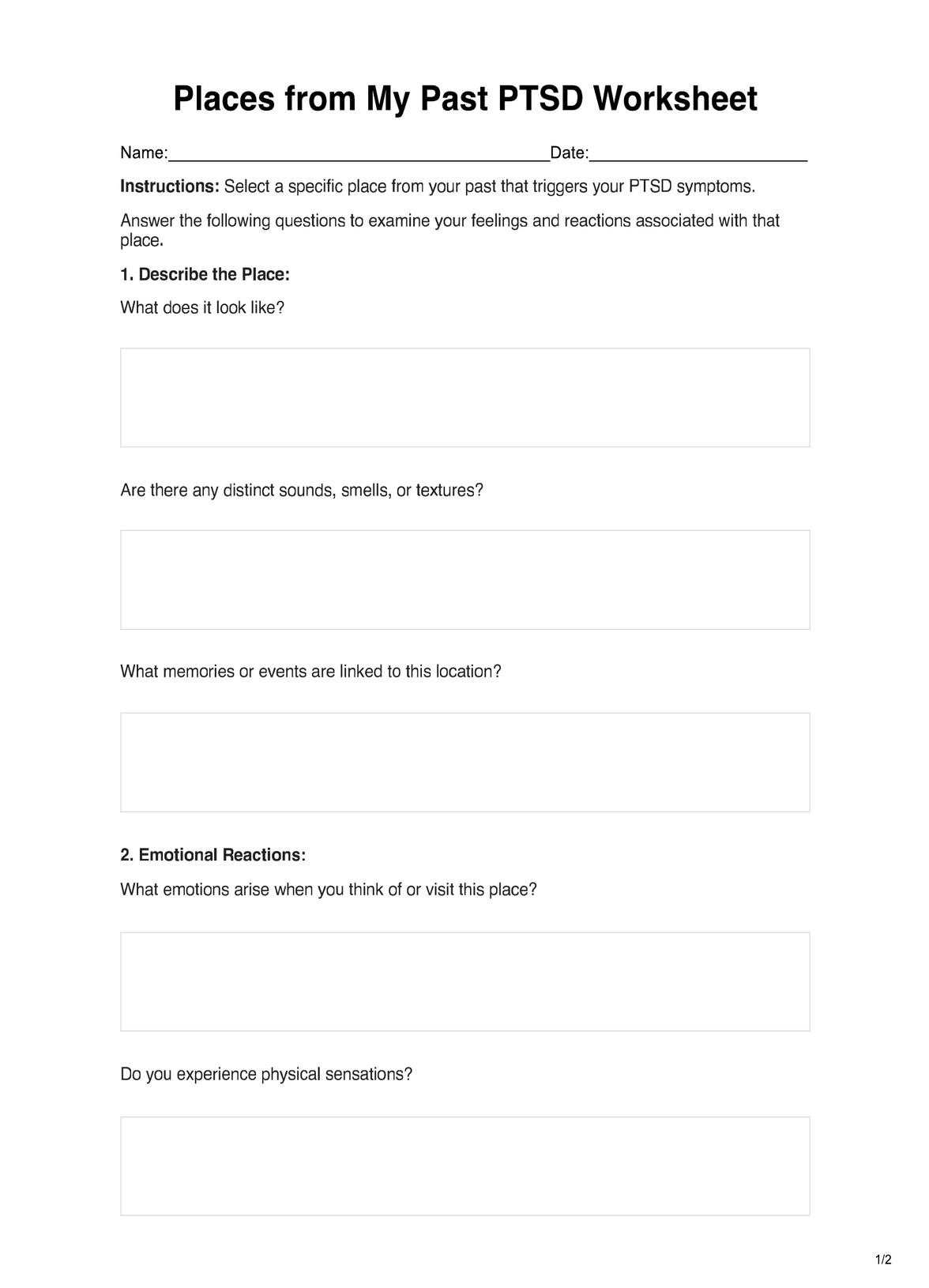
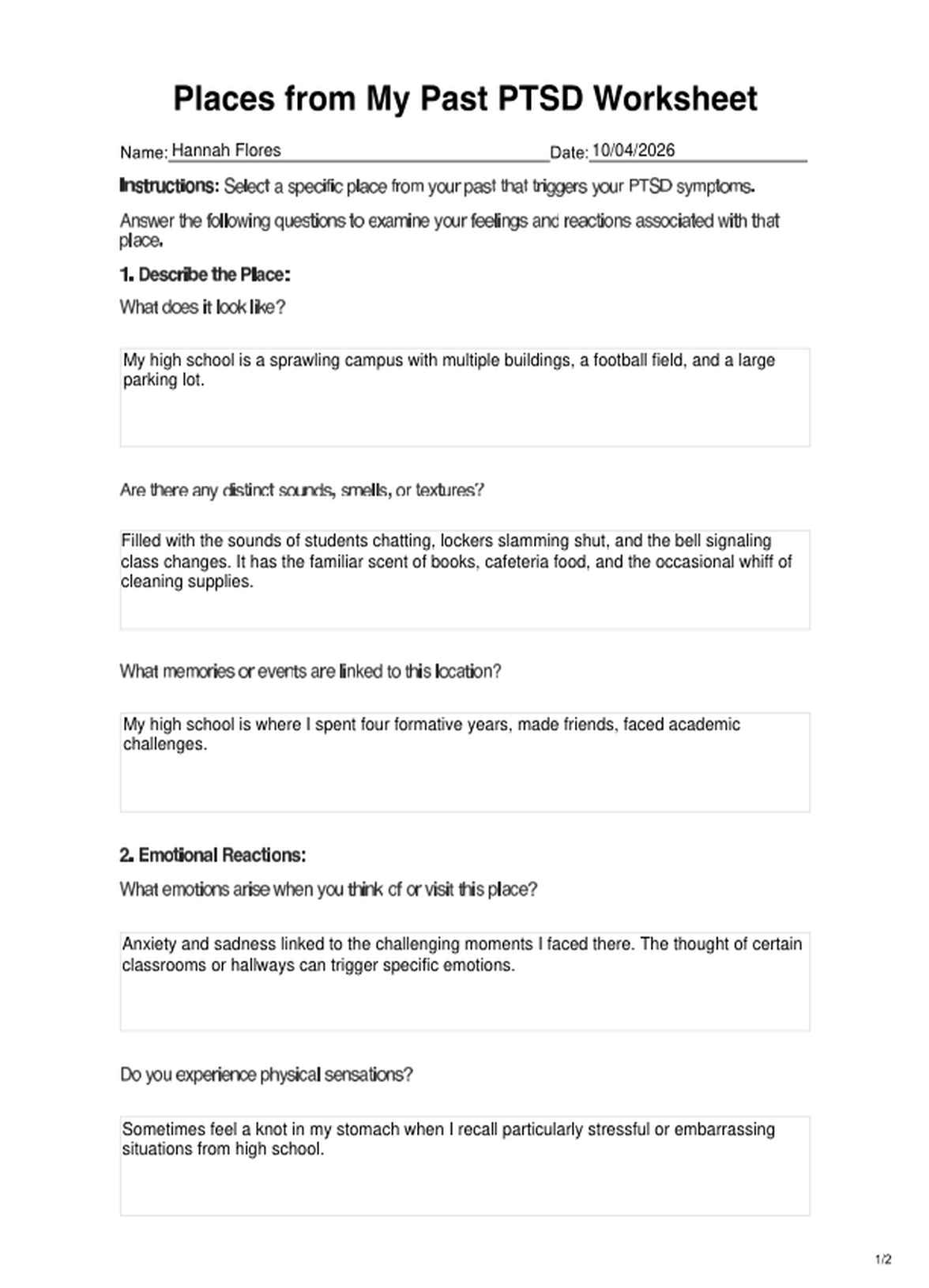

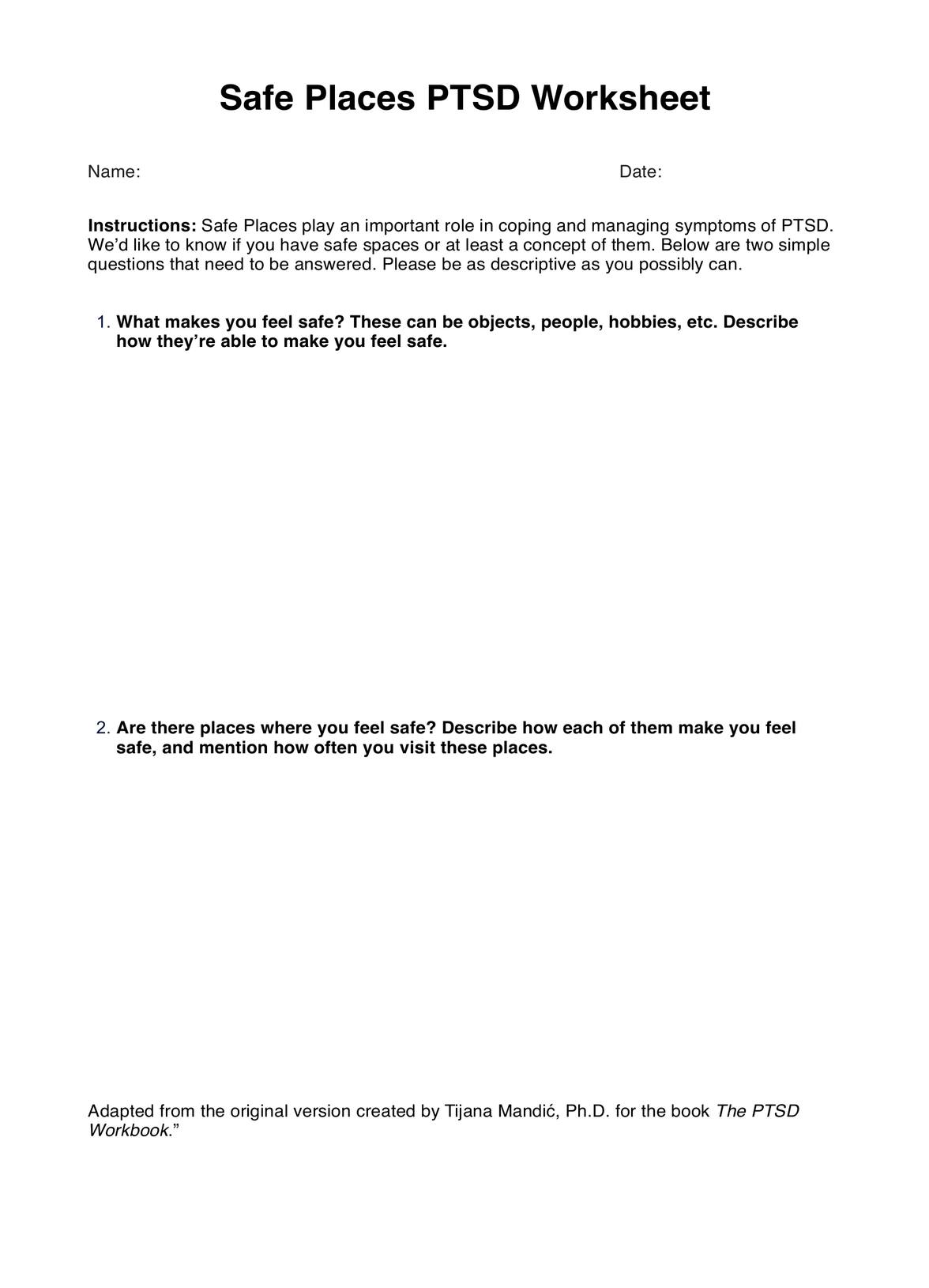















-template.jpg)




















































































